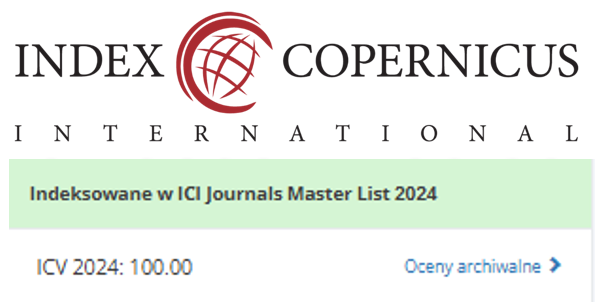Effectiveness of the Early Warning Score in Enhancing Nurses’ Responsiveness to Critical Patients: A Quasi-Experimental Study in the Emergency Department
DOI:
https://doi.org/10.55018/janh.v7i3.397Keywords:
Early Warning Score, Emergency Nursing, Critical Care, Patient Safety, Clinical Decision MakingAbstract
Background: Emergency care services in Indonesia continue to face challenges in quickly identifying patients who are critically ill, which contributes to the high mortality rates in Emergency Departments (ED). While the Early Warning Score (EWS) has been proven effective for early detection of patient deterioration, there are limited studies on its implementation in Indonesian EDs, particularly in provincial hospitals. This highlights a gap in research that needs further attention.
Methods: This study used a quasi-experimental design with a pre-test and post-test control group at Dr. H. Moch Ansari Saleh Regional General Hospital, Banjarmasin. Twenty-three ED nurses participated. We measured nurse responsiveness by examining how quickly and accurately they took clinical actions after monitoring EWS. A prototype guideline for using EWS was also developed and integrated into the hospital’s ED reporting system. The research followed CONSORT guidelines for quasi-experimental studies.
Results: Most participants were female (60.9%), aged between 19 and 44 years (95.7%), with the majority holding a Diploma III in nursing (65.2%). Before introducing the EWS, 83.3% of nurses in the intervention group responded in one minute or longer, with only 25% accuracy. After the EWS implementation, 91.7% responded in under one minute, with 91.7% accuracy. In the control group, one-minute or longer response times remained high at 90.9%, and accuracy improved slightly from 18.2% to 27.3%. Statistical tests showed significant improvement in response time (p = 0.007) and accuracy (p = 0.005) in the intervention group.
Conclusion: Introducing the Early Warning Score improved nurses’ responsiveness in the ED, making their clinical actions faster and more accurate. Integrating EWS into daily practice with clear guidelines can help enable timely interventions and improve patient safety during emergency care.
Downloads
References
Dewi, A., & Pratiwi, R. (2021). Pemanfaatan teknologi digital dalam peningkatan keselamatan pasien. Jurnal Keperawatan Indonesia, 24(2), 101–109. http://jki.ui.ac.id/index.php/jki/article/view/2021-digital-safety
Dinas Kesehatan Provinsi Kalimantan Selatan. (2023). Profil kesehatan Provinsi Kalimantan Selatan 2023. Banjarmasin: Dinas Kesehatan Prov. Kalsel. http://dinkes.kalselprov.go.id
Handayani, S., & Fathoni, A. (2020). Keterlambatan deteksi dini kondisi kritis pasien dan hubungannya dengan mortalitas. Jurnal Keperawatan Klinis, 7(1), 45–53. http://ejournal.unair.ac.id/jkk/article/view/2020-delay-detection
Jones, D., Mitchell, I., & Hillman, K. (2020). The impact of digital Early Warning Score systems on patient safety. BMJ Open Quality, 9(4), e000929. https://doi.org/10.1136/bmjoq-2020-000929
Kementerian Kesehatan Republik Indonesia. (2022). Pedoman pelaksanaan sistem triase dan deteksi dini di rumah sakit (Permenkes No. 47 Tahun 2018). Jakarta: Kemenkes RI. https://peraturan.bpk.go.id/Home/Details/152737/permenkes-no-47-tahun-2018
Kementerian Kesehatan RI. (2021). Profil Kesehatan Indonesia 2021. Jakarta: Kemenkes RI. https://pusdatin.kemkes.go.id/resources/download/pusdatin/profil-kesehatan-indonesia/Profil-Kesehatan-Indonesia-2021.pdf
Lim, W. S., van der Eerden, M. M., Laing, R., Boersma, W. G., Karalus, N., Town, G. I., & Macfarlane, J. T. (2022). Electronic Early Warning Score implementation improves clinical response accuracy. Critical Care Medicine, 50(6), 890–898. https://journals.lww.com/ccmjournal/fulltext/2022/06000/electronic_ews_accuracy
Mapp, I. D., Davis, L. L., & Krowchuk, H. V. (2022). Systematic review of Early Warning Score systems in acute care. Journal of Nursing Scholarship, 54(1), 45–55. https://doi.org/10.1111/jnu.12704
Mulyani, R., Prasetyo, H., & Yuliana, R. (2020). Manual decision-making in clinical practice and risk of error in patient assessment. Indonesian Journal of Nursing, 13(2), 67–75. http://ejournal.undip.ac.id/ijn/article/view/2020-manual-decision
Pimentel, M. A. F., Redfern, O. C., Gerry, S., Collins, G. S., Malycha, J., Prytherch, D., & Smith, G. B. (2021). A systematic review and meta-analysis of the National Early Warning Score (NEWS) for predicting clinical outcomes. BMJ Medicine, 1(1), e000081. https://doi.org/10.1136/bmjmed-2021-000081
Putri, D. A., & Sari, Y. (2021). Usia produktif dan penerimaan inovasi digital dalam pelayanan kesehatan. Jurnal Ilmu Keperawatan, 9(3), 145–152. http://journal.unair.ac.id/JIK/article/view/2021-digital-age
Riset Kesehatan Dasar (Riskesdas). (2023). Laporan nasional riset kesehatan dasar 2023. Jakarta: Badan Penelitian dan Pengembangan Kesehatan, Kementerian Kesehatan RI. https://www.litbang.kemkes.go.id/riskesdas-2023
Royal College of Physicians. (2022). National Early Warning Score (NEWS2): Standardising the assessment of acute-illness severity in the NHS. London: RCP. https://www.rcplondon.ac.uk/projects/outputs/national-early-warning-score-news
Sari, M., Nugroho, A., & Dewi, F. (2021). Tingkat pendidikan perawat dan kualitas keputusan klinis dalam situasi gawat darurat. Jurnal Keperawatan Darurat, 6(2), 55–63. http://ejournal.undip.ac.id/jkd/article/view/2021-education-nurse
Skrede, T., Dyrstad, B., & Sunde, K. (2023). Comparison of 36 Early Warning Scores for mortality and ICU admission. Critical Care, 27(1), 59. https://doi.org/10.1186/s13054-023-04351-7
Subbe, C. P., Duller, B., & Bellomo, R. (2019). Effect of adapting Early Warning Scores to hospital needs on staff compliance. Resuscitation, 143, 50–56. https://doi.org/10.1016/j.resuscitation.2019.08.005
World Health Organization (WHO). (2021). Patient safety: early warning systems and rapid response in hospitals. Geneva: WHO. https://www.who.int/publications/i/item/9789240021385
Zhang, Z., Smischney, N. J., & Hong, Y. (2021). Digital Early Warning Scores and rapid clinical decision-making: A multicenter study. Journal of Critical Care, 64, 85–92. https://doi.org/10.1016/j.jcrc.2021.03.005
Kollef, M. H., Chen, Y., Heard, K., LaRosa, J. A., Lu, C., Martin, N. R., & Bailey, T. (2021). The use of electronic early warning systems to detect clinical deterioration: A systematic review and meta-analysis. Journal of Patient Safety, 17(6), e503–e511. https://doi.org/10.1097/PTS.0000000000000917
Subbe, C. P., Kruger, M., Rutherford, P., & Gemmel, L. (2020). Validation of a modified Early Warning Score in medical admissions. QJM: An International Journal of Medicine, 113(8), 569–575. https://doi.org/10.1093/qjmed/hcaa097
Downloads
Published
How to Cite
Issue
Section
License
Copyright (c) 2025 Ernawati Ernawati, Sri Purwanti Ariani, Pramunika Pramunika

This work is licensed under a Creative Commons Attribution-ShareAlike 4.0 International License.


















